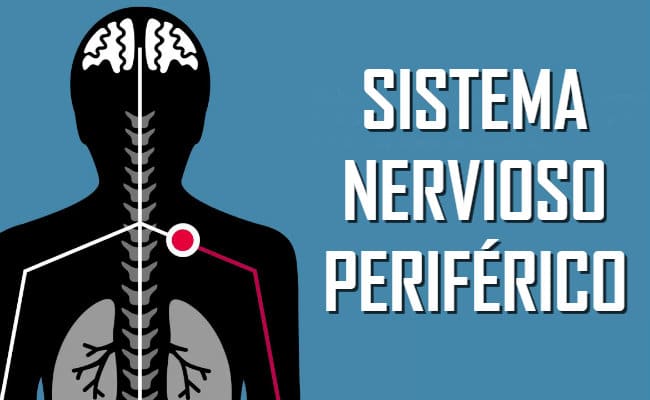The brain is made up of many parts and areas, including the nervous system, which is defined as the structures and organs that are formed by nervous tissue and whose objective is to receive and process the signals received by the different organs, in order to give a positive response to the changes that the environment where the animals live may present. animals (humans that are within chordates, arthropods, mollusks, flatworms and cnidarians).
The nervous system is made up of the central nervous system and the peripheral nervous system; of which we talked in a general way in a past article (you can access by clicking here). However, this time we will place more emphasis on the peripheral, in which we will touch on topics such as its functions, parts and diagrams.
What is the peripheral nervous system?
Also known by its acronym SNP (abbreviation of the same name), it refers to the nerves and neurons, which are structures external to the brain and the central nervous system (CNS); but that in turn, allows the connection between the CNS and the members or organs of the body. In addition, it is characterized (or different from the central nervous system) by not having protection against toxins or damage caused by movements.
In other words, the peripheral nervous system is in charge of coordinate and control the organs found inside the body. For this task it makes use of the axons, a continuation of the neuron that aims to send nerve impulses to other cells.

Furthermore, in the PNS the regeneration of lesions is possible and the development of axons is improved thanks to the Schwann cells. This is because these (also known as neurolemocytes), are glial cells that are present in this system so that neurons can function properly.
What are its parts?
The SNP is made up of the somatic and autonomic nervous system; although the latter is often confused as a "subdivision" of the peripheral, when in reality it is only a component of it.
Somatic nervous system
The somatic nervous system is divided into two types of nerves, the spinal and the cranial. Although in both cases its function is transmit or receive sensory informationBoth have their own differences, which we must detail for your correct understanding.
- On the one hand, the spinal nerves fulfill this function in the extremities and the trunk, sending or receiving sensory information using the spinal cord as a medium. In the case of "sending" the information, the purpose is to indicate the state and position of the muscles, joints and extremities; while it "receives" the motor commands through the special cord, that is, thanks to them it is possible to carry out movements.
- The other element is the cranial nerves, which are in charge of the upper areas, that is, the neck and the head. This sends the sensory information received by these parts to the central nervous system; while the neck and head receive motor commands through the CNS.

Autonomic nervous system
As its name indicates, it is responsible for the functions that we do not control (respiration, digestion, among others) since they work autonomously thanks to the orders sent by the central nervous system. Among its functions, we find the control of the cardiac and smooth muscles, viscera and glands; which are made by the branches parasympathetic and sympathetic.
- El parasympathetic system It is basically in charge of preparing our body for specific situations, whether it is preparing it to digest food or due to external threats, such as fleeing from a situation (the body responds positively and in many cases, it is possible to run more fast due to system setup).
- The sympathetic, on the other hand, has as its objective the correct functioning of the body; such as returning the heart rate to its normal state after altering it for any reason.
What are the nerves of the PNS?
The nerves of the peripheral nervous system can be divided into three types: the cranial nerves, upper limb nerves and lower limb nerves.
- There are twelve cranial nerves, which arise in the brain or near the brain stem, although it varies according to the function to be fulfilled and they are distributed in different parts of the body, such as the skull, thorax, neck and abdomen. These are sensory nerves and are divided into nerve olfactory, optic, oculomotor, trochlear, trigeminal, abducent, facial, auditory, glossopharyngeal, vagus, accessory, and hypoglossal.
- The nerves of the upper and lower limbs refers to the nerves capable of transmitting sensations such as temperature, pain levels, position of extremities, among others. There are 31 pairs of them and are located in the neck, chest, lower back, sacrum and coccyx.
We hope that the information has been to your liking and easy to read, since these topics can sometimes be complicated when you do not have prior information about the anatomy and functioning of the elements that make up the brain or body.
That my address will not be published haha ha./. . That I really like what I read
First of all I would like to congratulate you on the professionalism and content of the blog, which have managed to get my attention and visit it repeatedly. Congratulations! I appreciate the quality of the information, something that is difficult to find today.
Regarding the post, I loved it, I completely agree with what you say, what's more, you have made me learn new things and remember others that I had forgotten. Thanks.
Receive an affectionate hug and once again my sincere congratulations
I loved it, it was very good information!